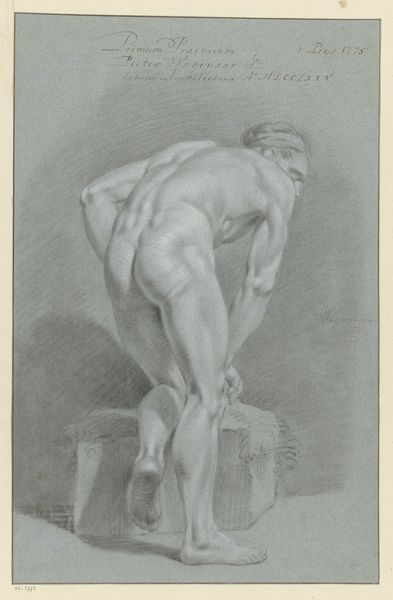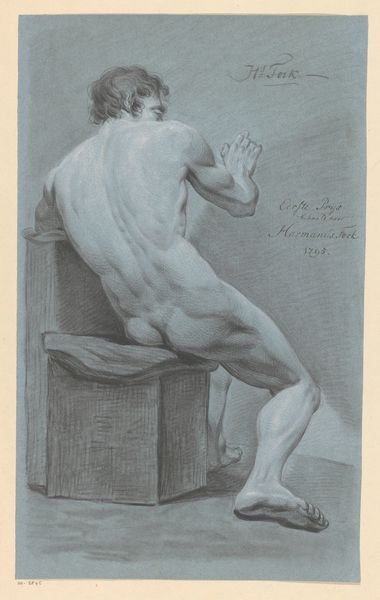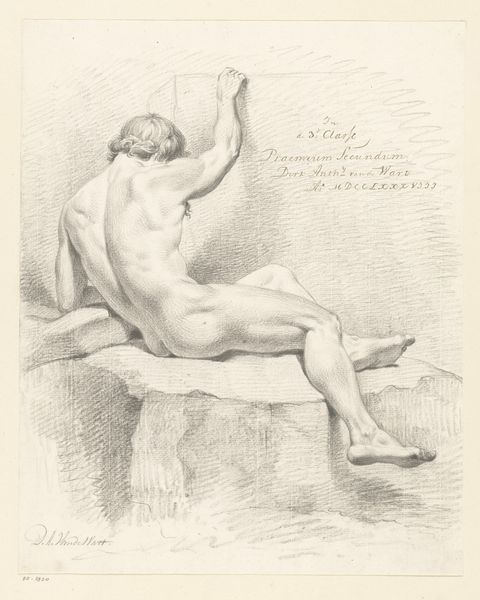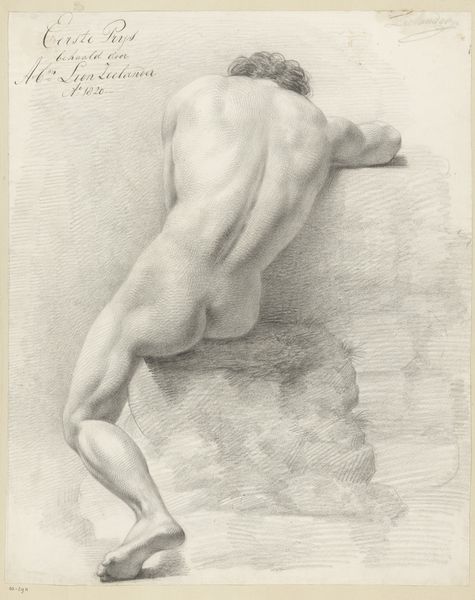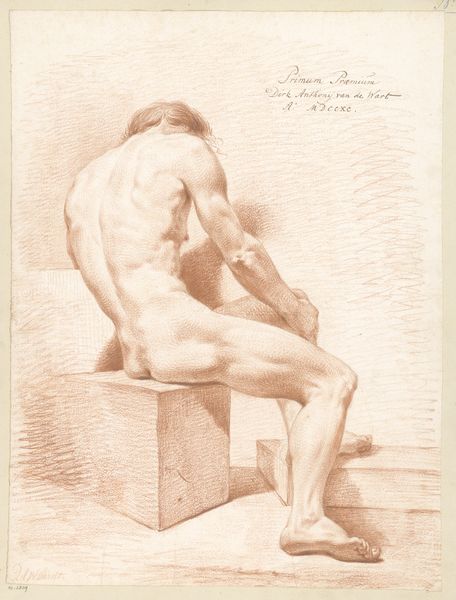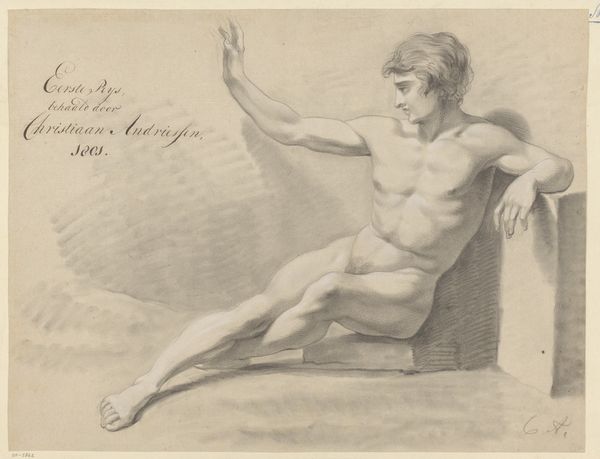
drawing, pencil
#
drawing
#
pencil drawing
#
pencil
#
portrait drawing
#
history-painting
#
academic-art
#
nude
Dimensions: height 426 mm, width 309 mm
Copyright: Rijks Museum: Open Domain
Curator: Looking at this pencil drawing from around 1780-1785 by Jan Tersteeg, titled “Kneeling Male Nude (1st Prize 1780)", what’s the first thing that strikes you? Editor: It’s the pose, definitely the pose. There’s a weariness, an almost burdened quality about it. His head is bowed, and the kneeling stance suggests submission, but perhaps also resilience. It feels loaded with symbolism. Curator: I agree. Knowing Tersteeg won a prize for it in 1780 suggests a very specific context: the rigorous academic training of artists at that time. The intense focus on anatomical precision is palpable. Editor: Right, this wasn't just about depicting a body; it was about mastering and showcasing a very specific ideal of the male form. Yet, I wonder, within that framework, what space was there for the model's own experience? How do we reckon with the power dynamics inherent in the act of observing and representing a nude figure, especially from a historical distance? Curator: It’s a tension, isn’t it? The "1st Prize" screams institutional validation, but the drawing itself whispers something far more human. He isn't idealized in a heroic sense; rather, he embodies a very grounded, almost vulnerable physicality. Editor: Exactly. Think about it—the nude body has historically been a battleground for projecting all sorts of social and political anxieties onto. Here, that bowed head feels like a refusal to meet the viewer's gaze, a subtle act of resistance within a very constrained representational space. Curator: It's fascinating how the simple act of kneeling shifts the entire narrative. It takes the man out of the purely aesthetic realm and inserts him into a potentially devotional or suppliant space. Editor: And that slight tension in the back, the way the hand grips the knee… it hints at something beyond mere anatomy, maybe even discomfort. It disrupts any easy reading of dominance or control. It allows for contemplation about not only art history, but the relationship between bodies, representation, and the societies we live in. Curator: It seems the Tersteeg captured, perhaps inadvertently, a kind of quiet dignity within a very conventional exercise. It lingers in the mind long after you notice the technical skill. Editor: Absolutely. The drawing transcends its immediate context as an academic exercise to provoke broader questions about power, representation, and the complexities of the human experience.
Comments
No comments
Be the first to comment and join the conversation on the ultimate creative platform.
